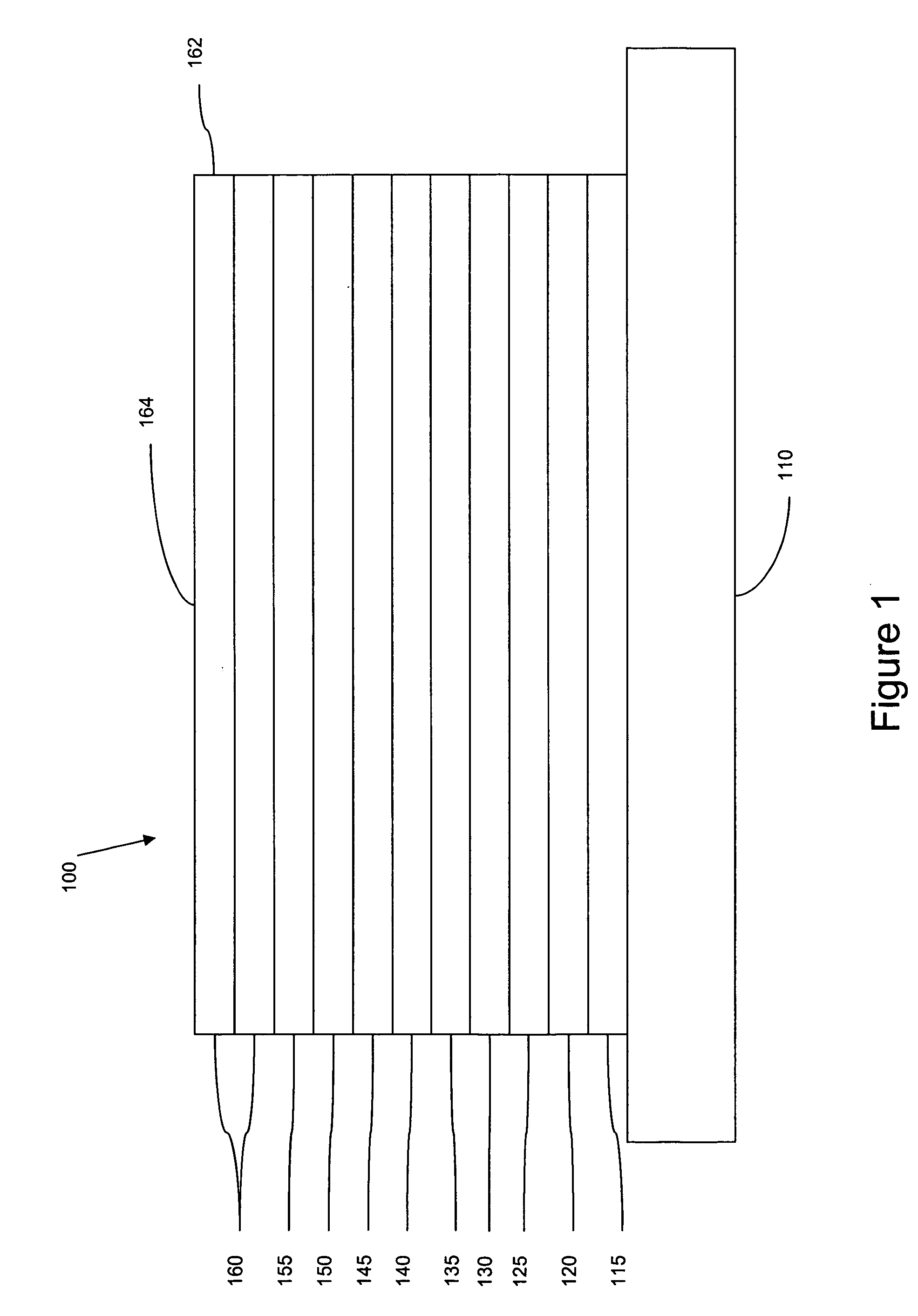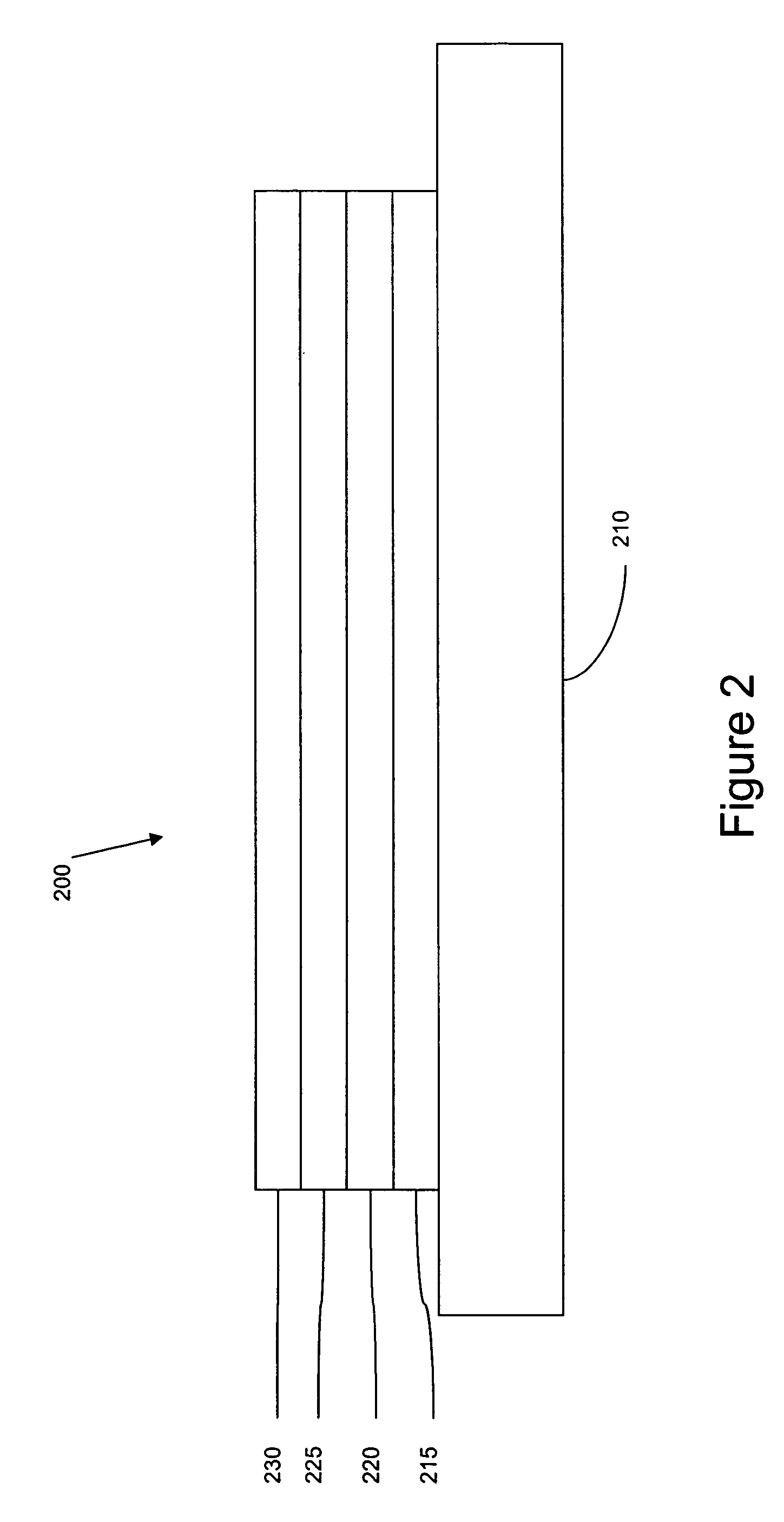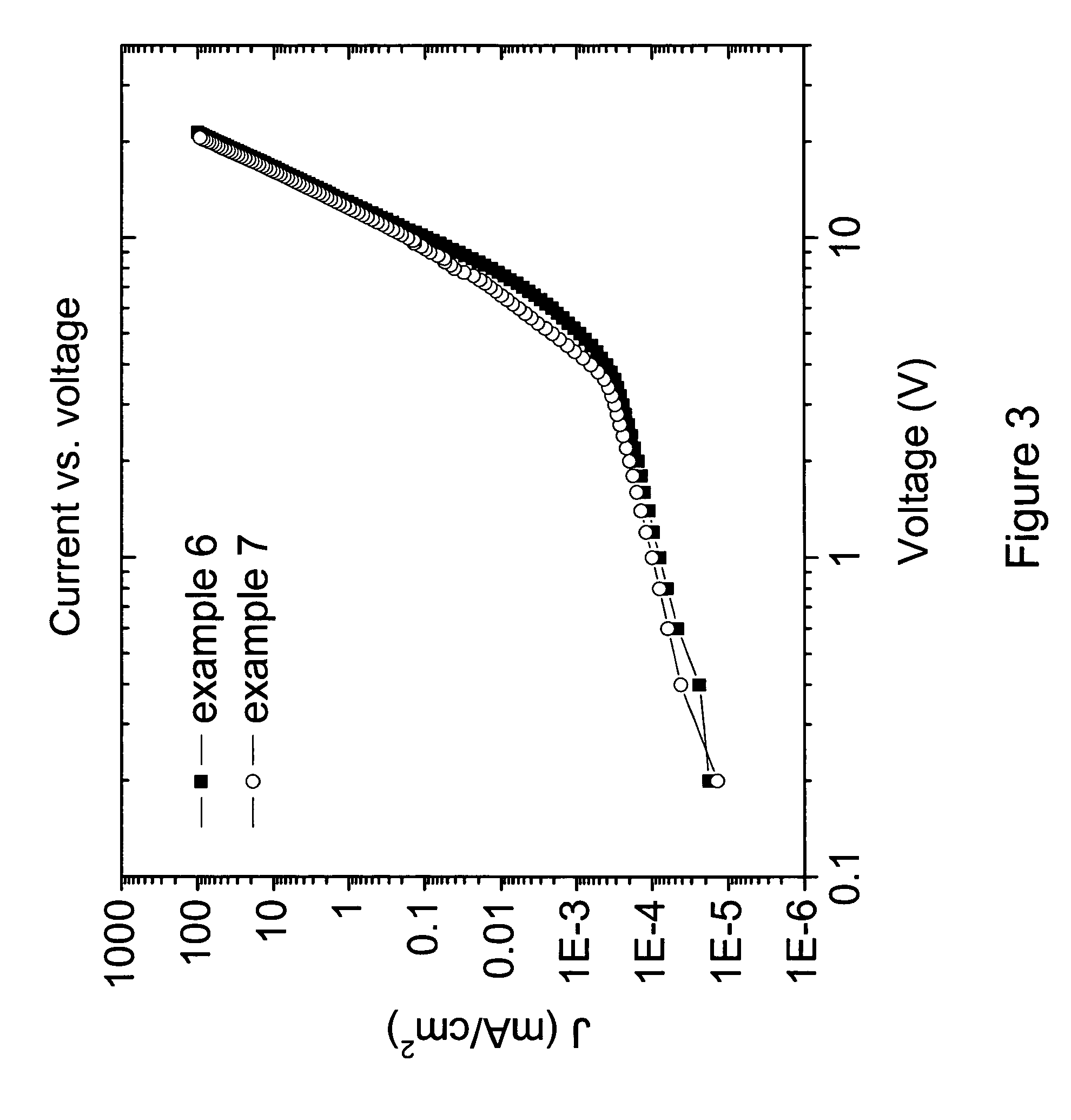Organometallic compounds for use in electroluminescent devices
a technology of organic compounds and electroluminescent devices, which is applied in the direction of discharge tube luminescnet screens, natural mineral layered products, etc., can solve the problems of not being sufficiently stable for commercial devices, not well known applications of carbene ligands in photochemistry, and existing compounds not including compounds that are stable emitters. , to achieve the effect of stable manner
- Summary
- Abstract
- Description
- Claims
- Application Information
AI Technical Summary
Benefits of technology
Problems solved by technology
Method used
Image
Examples
example 1
Synthesis of fac-iridium(III) tris(n-[p-trimethylsilylphenyl]-2-methyl-benzimidazole)
Step 1: Synthesis of N-(p-trimethylsilylphenyl)benzimidazole
[0121]To a 1L 3-neck flask equipped with a mechanical stir arm was added 14.5 g (65.1 mmol) of 1-bromo-4-trimethylsilylbenzene, 9.2 g (78.1 mmol) of benzimidazole, 9.1 g (143 mmol) of copper power, 31.4 g (228 mmol) of potassium carbonate, and 1.7 g (6.5 mmol) of 18-crown-6. These chemicals were stirred vigorously in 400 mL tetrahydronaphthalene at 180° C. under N2 atmosphere. After 20 hours of heating, the mixture was filtered warm. The solids on the funnel were repeatedly washed with dichloromethane to remove all organic products as filtrate. The mother liquor was then evaporated in vacuo and pooled with a small batch of crude material from a previous reaction. This residue was purified by distilling on a Kugelrohr apparatus twice. At 160° C., the removal of organic impurities was evidenced. At 200° C. the product distilled. Purification ...
examples 2 , 3
EXAMPLES 2, 3
Synthesis of fac(mer)-iridium(III) tris(n-[3-biphenyl]-2-methyl-benzimidazole) [Dopant E, F]
Step 1: Synthesis of N-(3-biphenyl)benzimidazole
[0124]To a 3 L 3-neck flask equipped with a mechanical stir arm was added 100 g (429 mmol) of 3-bromobiphenyl, 60.7 g (514 mmol) of benzimidazole, 60 g (943 mmol) of copper powder, 207 g (1500 mmol) of potassium carbonate and 11.3 g (42.9 mmol) of 18-crown-6. These chemicals were stirred vigorously in ˜1.5 L tetrahydronaphthalene at 180° C. under N2 atmosphere. After 48 hours of heating, the mixture was filtered warm. The solids on the funnel were repeatedly washed with dichloromethane to remove all organic products as filtrate. The mother liquor was then evaporated in vacuo to give a dark residue that was solubilized with a minimal amount of dichloromethane and purified on a silica gel column using a gradient of 50% EtOAc / hexanes→100% EtOAc. The purest fractions were evaporated of solvent, and the resultant solids sonciated in hexa...
examples 4 , 5
EXAMPLES 4, 5
Synthesis of fac(mer)-iridium(III) tris(1-(N-[2-methylbenzimidazole])-4-(o-tolyl)benzene) [Dopant G]
Step 1: Synthesis of 1-(N-benzimidazole)-4-(o-tolyl)benzene
[0127]To a 2 L 3-neck flask equipped with a mechanical stir arm was added 46.6 g (189 mmol) of 1-bromo-4-(o-tolyl)benzene, 26.7 (226 mmol) of benzimidazole, 26.3 g (415 mmol) of copper powder, 91.1 g (660 mmol) of potassium carbonate and 5.0 g (18.9 mmol) of 18-crown-6. These chemicals were stirred vigorously in ˜1.0 L tetrahydronaphthalene at 180° C. under N2 atmosphere. After 48 hours of heating, the mixture was filtered warm. The solids on the funnel were repeatedly washed with dichloromethane to remove all organic products as filtrate. The mother liquor was then evaporated in vacuo to give a dark residue that was solubilized with a minimal amount of dichloromethane and purified on a silica gel column using a gradient of 50% EtOAc / hexanes→100% dicoloromethane. The purest fractions were evaporated of solvent and...
PUM
| Property | Measurement | Unit |
|---|---|---|
| time | aaaaa | aaaaa |
| time | aaaaa | aaaaa |
| internal quantum efficiencies | aaaaa | aaaaa |
Abstract
Description
Claims
Application Information
 Login to View More
Login to View More - R&D
- Intellectual Property
- Life Sciences
- Materials
- Tech Scout
- Unparalleled Data Quality
- Higher Quality Content
- 60% Fewer Hallucinations
Browse by: Latest US Patents, China's latest patents, Technical Efficacy Thesaurus, Application Domain, Technology Topic, Popular Technical Reports.
© 2025 PatSnap. All rights reserved.Legal|Privacy policy|Modern Slavery Act Transparency Statement|Sitemap|About US| Contact US: help@patsnap.com



